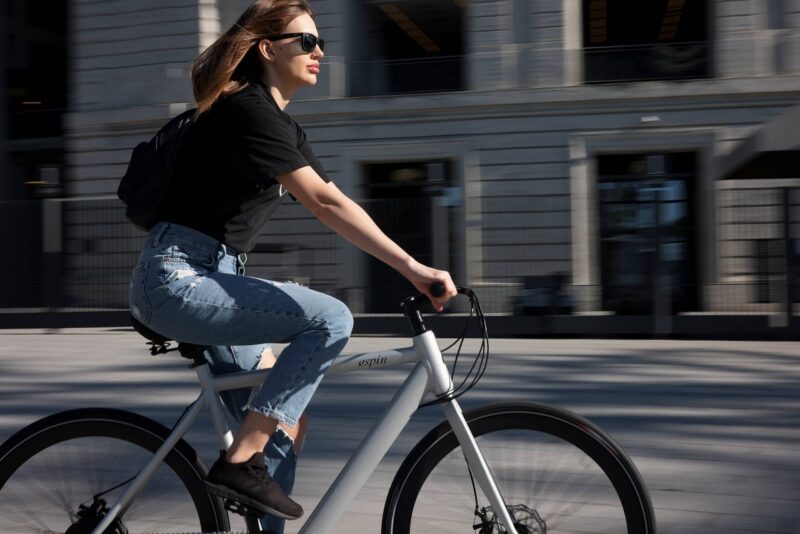How Transportation Is Evolving to Support More Eco-Friendly Commutes
November 12, 2024

The transportation industry is undergoing a seismic shift as the world becomes increasingly aware of the urgent need for greener practices. With the rise of climate change concerns, urban congestion, and public health issues, more cities and businesses are adopting eco-friendly transportation solutions. In this article, we will explore the various ways transportation is evolving to support more sustainable commuting practices, highlighting innovative technologies, infrastructure improvements, and consumer behavioral shifts.
1. The Need for Eco-Friendly Commuting Solutions
As urban populations grow, transportation has become one of the largest contributors to greenhouse gas emissions. According to the U.S. Environmental Protection Agency (EPA), transportation accounts for over 29% of total greenhouse gas emissions. Therefore, it is imperative to rethink how we move and develop strategies that reduce our carbon footprint.
The adverse effects of traditional commuting are multifaceted:
- Air Pollution: Vehicles powered by fossil fuels emit harmful pollutants that contribute to asthma, respiratory issues, and other health problems.
- Congestion: Traffic congestion wastes time and gasoline while increasing frustrations and reducing quality of life for commuters.
- Climate Change: Carbon emissions from transportation exacerbate global warming, leading to severe weather events and altered climates worldwide.
To combat these issues, various trends and technologies have emerged, making transportation not just a necessity, but an opportunity for sustainability.
2. The Rise of Electric Vehicles (EVs)
Electric vehicles have become synonymous with the movement toward eco-friendly commuting. With advancements in battery technology, charging infrastructure, and governmental incentives, EVs are rapidly gaining popularity.
Key aspects include:
- Lower Emissions: EVs produce zero tailpipe emissions, reducing air pollution significantly, especially in urban areas where air quality can be poor.
- Energy Efficiency: Electric motors convert energy to movement much more efficiently than internal combustion engines, which translates to lower operating costs.
- Incentives: Governments worldwide offer rebates, tax credits, and other incentives to encourage EV adoption among consumers and businesses.
Examples of prominent EV manufacturers include Tesla, Nissan, and newer entrants like Rivian and Lucid Motors. Many traditional automakers, such as Ford and GM, are also pivoting towards EV production to meet consumer demand and regulatory requirements.
3. Public Transportation Goes Green
Public transportation systems are also evolving to become more sustainable. Many cities are investing in hybrid or fully electric buses, trams, and trains.
Some key points of improvement include:
- Investing in Infrastructure: Upgrades to existing transportation networks include creating dedicated bus lanes, installing charging stations, and implementing smart traffic management systems to optimize transit schedules.
- Adoption of Alternative Fuels: Many public transit agencies are transitioning to alternative fuels like biodiesel and hydrogen fuel cells to reduce their overall environmental impact.
- Integrating Multi-modal Transport: Seamless integration of various transport modes, including cycling, public transit, and ride-sharing, makes it easier for commuters to switch from personal vehicles to greener alternatives.
Cities like Barcelona and Shenzhen offer examples of successful public transport initiatives that prioritize eco-friendliness while also increasing convenience for their residents.
4. The Growth of Shared Mobility Solutions
The traditional model of individual car ownership is slowly fading with the rise of shared mobility options like car-sharing, bike-sharing, and ride-hailing services. These solutions are transforming how we think about transportation.
Key insights include:
- Reducing the Need for Personal Vehicles: By providing flexible options for on-demand travel, shared mobility reduces the number of cars on the road and leads to lower emissions.
- Making Transportation More Accessible: These services are helping individuals and families who do not own vehicles access reliable transportation for essential services, work, or leisure activities.
- Encouraging Multi-Modal Travel: Shared mobility encourages commuters to use multiple forms of transportation, such as bike-sharing to access public transit, which enhances the overall efficiency of urban commuting.
Companies like Zipcar, Lime, and Uber are leading this movement, providing disruptive solutions that align with the growing demand for sustainability.
5. Innovations in Bicycle and Pedestrian Infrastructure
Bicycles and walking not only minimize environmental impact but also promote healthier lifestyles. Cities are modernizing their infrastructure to make non-motorized transport safer and more attractive.
Consider the following improvements:
- Dedicated Bike Lanes: Cities are implementing protected bike lanes, ensuring the safety of cyclists and making cycling a viable commuting option.
- Bike Rental Programs: Many urban centers offer bike rentals for short trips, encouraging residents to opt for bikes over cars for short commutes.
- Pedestrian-Friendly Design: Walkable city planning includes wider sidewalks, better crossing signals, and pedestrian zones that prioritize foot traffic, making walking more appealing for daily commutes.
Cities like Copenhagen and Amsterdam lead the world in bicycle-friendly infrastructure, proving that investing in cycles can significantly influence commuting patterns.
6. Technological Advancements Enhancing Sustainable Commuting
Technology plays a pivotal role in transforming transportation into a more sustainable entity. Several innovations are reshaping commutes, promoting efficiency and reducing barriers.
Key technologies include:
- Smart Traffic Management Systems: Utilizing data analytics and real-time traffic monitoring, smart systems optimize traffic flow, reducing congestion and pollution from idling vehicles.
- Mobile Apps for Eco-Friendly Travel Options: Applications like Google Maps and Citymapper help users find the most efficient routes using public transit, walking, cycling, or rideshare options, promoting greener commuting habits.
- Autonomous Vehicles: Although still in development, self-driving vehicles have the potential to revolutionize public transportation, reducing road congestion and improving fuel efficiency.
The integration of these technologies into the transportation sector has brought about new possibilities for sustainable commuting practices.
Conclusion
The evolution of transportation is vital in supporting eco-friendly commutes. As we reconsider our commuting habits and prioritize sustainability, advances in electric vehicles, public transport systems, shared mobility solutions, and innovative infrastructure changes are paving the way for a greener future. By embracing these changes, society can reduce its impact on the environment while enhancing the quality of life for commuters.
In conclusion, conscious contributions from governments, businesses, and individuals are necessary to further promote environmentally friendly transportation options. As these transformations continue, the goal of reducing urban emissions seems not only attainable but within reach, leading us toward smarter, cleaner, and healthier commutes for everyone.






